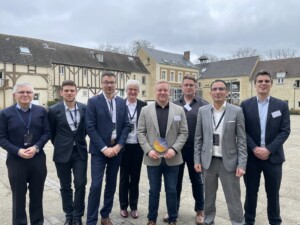Cleantech project on waste-water decontamination
Sustainability is a leading vocation, and opportunity for the modern industries and many efforts are being directed to developing technologies with limited environmental impact and free of Critical Raw Materials (CRMs). The research necessary to implement such new technologies is sometimes quite demanding for the small-medium enterprises and big companies alike. Thus, the collaboration between academia-research and industry is fundamental to synergistically foster the technological innovation and environmental sustainability.
The abatement of wastes from polluted water streams is an energy-intensive process that often requires catalysts based on CRMs (in particular precious metals) and ultraviolet light. The use of the sunlight as energy input and materials based on earth-abundant (preferably CRM-free) elements would be the solution to these issues. Photo-catalytic materials with industrially relevant performances are still at the stage of development, and much expertise is needed to master them.
Critical Raw Material-free CATalystS (FREECATS) Network of Infrastructure (NoI), an innovation project supported by EIT RawMaterials, joined forces to help Bracco Imaging SpA (Bracco) facing these challenges, under the leadership of the Institute of Science and Molecular Technology of the National Research Council (ISTM-CNR). Bracco was seeking new visible light-active photo-catalytic materials able to degrade some by-products of its production chain. The ISTM-CNR has a long-standing experience in fabrication of CRM-free photo-catalytic materials for a broad panel of applications, from hydrogen production to degradation of chemicals. This expertise has been exploited to prepare a series of iron- and titanium-based photo-catalysts have been developed through simple synthetic procedures.
The project has been successfully carried out from mid-2016 to the beginning of 2017 by de-siloing the expertise and know-how of the whole FREECATS consortium in photo-catalytic materials to the meet the requests of the industry in the spirit and targets of the EIT RawMaterials Community.
This know-how transfer within the EIT RawMaterials Community marks a significant achievement and is an example of what such network can practically do to tighten the bonds between the higher education and the industry for the business development and greener–and CRM-free–future.
Members of the FREECATS innovation project consortium:
- National Research Council (CNR), Italy (Lead Partner)
- Spanish National Research Council (CSIC), Spain
- University of Bologna, Italy
- Arkema, France
- National Institute of Materials Physics Bucharest – Magurele (NIMP), Romania
- Polytechnic University of Milan, Italy
- University of Oulu, Finland




